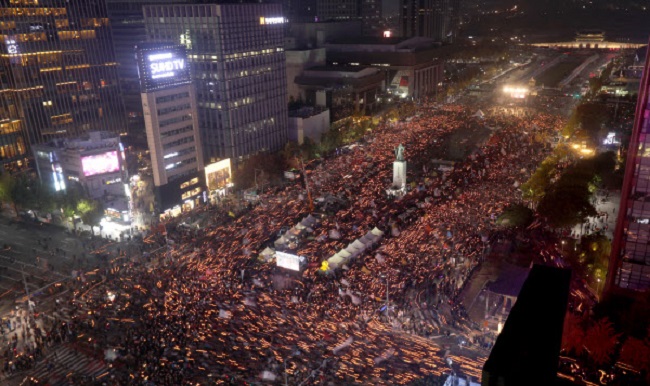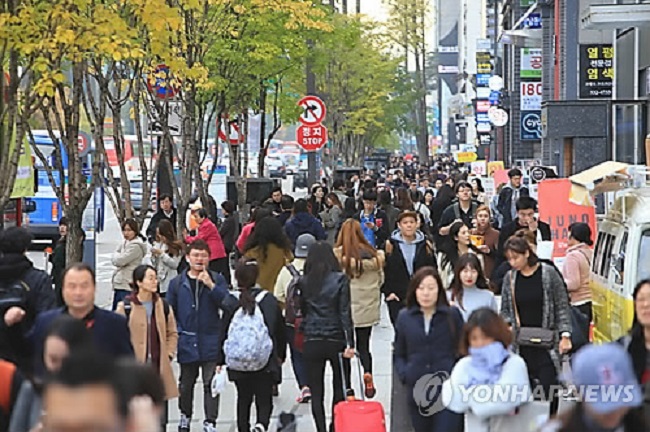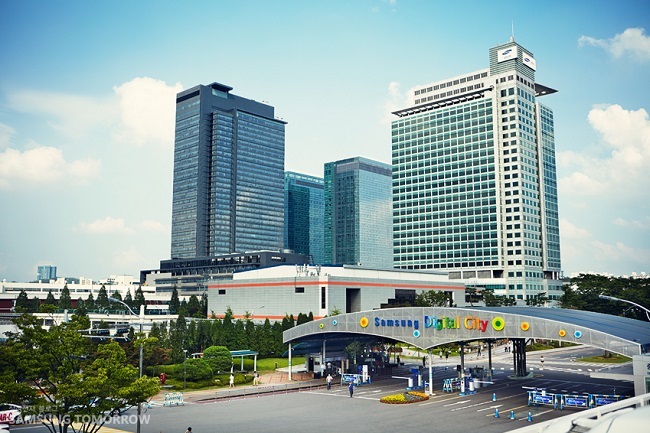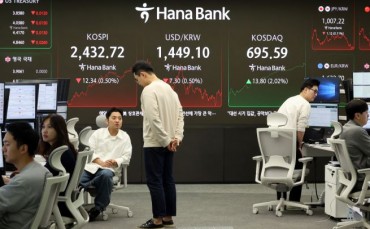
The business district surrounding Gwanghwamun Station, ground zero for 2017′s massive candlelight vigils that played a major role in impeaching former president Park Geun-hye, was found to have profited immensely from the protests. (Image: Yonhap)
SEOUL, Jan. 4 (Korea Bizwire) — The business district surrounding Gwanghwamun Station, ground zero for 2017′s massive candlelight vigils that played a major role in impeaching former president Park Geun-hye, was found to have profited immensely from the protests.
On January 3, SK Telecom cited the findings of its in-house research institute Geovision and revealed that the Gwanghwamun area had from November 2016 through October 2017 raked in 5.83 trillion won, making it the highest earning business district in the country.
Gwanghwamun’s achievement is all the more remarkable considering it was nowhere near the top in terms of revenue generated on Geovision’s 2013 study, coming in at only 741.1 billion won. Combining its revenues with that of the business districts located around nearby City Hall and Jonggak subway stations results in total revenue generated of 12.7 trillion won.

The highest earning business area in 2013, south of Gangnam Station, tumbled down the revenue list to 13th, while then third-ranked Apgujeong-dong also took a fall, ending up 19th. (Image: Yonhap)
The areas surrounding Samseong Station, Seolleung Station and north of Gangnam Station brought in 5.3 billion won, 4.7 trillion won and 4.8 trillion won, respectively.
Like its neighbor Gwanghwamun, businesses in the vicinity of City Hall Station experienced a big leap in earnings from 2013 to last year, going from 184.5 billion won (89th) to fifth place on Geovision’s list with 3.88 trillion won.
The highest earning business area in 2013, south of Gangnam Station, tumbled down the revenue list to 13th, while then third-ranked Apgujeong-dong also took a fall, ending up 19th.
SK Telecom explained that the public protests and other political movements that took place in the heart of the city last year and the relocation of Samsung personnel from the Gangnam Station area to Samsung Digital City in Suwon that was completed this year played significant roles in the boom and (relative) bust of Seoul’s business districts.

Geovision director Hah Do-hoon pointed out that the Suwon neighborhood – where Samsung Digital City is located – entered the top 100 revenue list for the first time since Geovision began conducting its study. (Image: Samsung Newsroom website)
Geovision director Hah Do-hoon pointed out that the Suwon neighborhood – where Samsung Digital City is located – entered the top 100 revenue list for the first time since Geovision began conducting its study.
SK Telecom added that it does not expect last year’s list to be replicated, viewing the Gwanghwamun area’s success as an exception rather than the rule going forward. With massive congregations unlikely to take place in the city square on a recurring basis, the expectation is for the business areas throughout Gangnam to retake the pole position.
Kevin Lee (kevinlee@koreabizwire.com)






